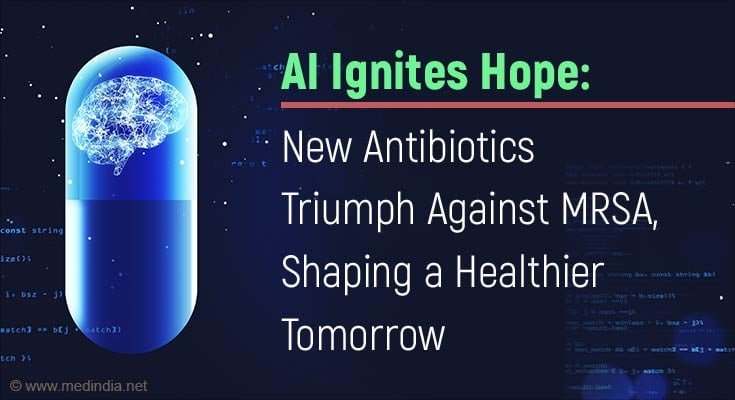New AI-Driven Antibiotics Against Drug-Resistant MRSA

- Transparent deep learning models unveil a new class of antibiotics for drug-resistant MRSA
- AI accelerates drug discovery, marking the first breakthrough in antibiotic development in six decades
- Integration of deep-learning models identifies two promising antibiotic candidates effective against MRSA
An innovative development in medicine involves the discovery of a novel class of antibiotics targeting drug-resistant Staphylococcus aureus (MRSA) bacteria. This breakthrough was facilitated through the application of more transparent deep learning models, marking a significant advancement in antibiotic research, which had seen no discoveries in 60 years (1✔ ✔Trusted Source
Discovery of a structural class of antibiotics with explainable deep learning
).
Utilizing AI to formulate Antibiotics
Artificial intelligence (AI) played a pivotal role in this achievement, as scientists utilized AI technology to reveal the first antibiotics capable of combating a bacterium responsible for thousands of deaths annually due to antibiotic resistance. Identifying a new compound with the potential to eliminate drug-resistant bacteria signifies a turning point in the ongoing battle against antibiotic resistance.
Professor James Collins, a key figure in the Massachusetts Institute of Technology (MIT) study, highlighted the importance of understanding the insights gained from the models in predicting effective antibiotics. The researchers’ work introduced a time-efficient, resource-efficient, and mechanistically insightful framework, particularly concerning the chemical structure of compounds.
Demystifying the Black Box of Nature
The study, published in Nature and authored by a team of 21 researchers, aimed to demystify the “black box” nature of deep-learning models. The team employed an extensively enlarged deep learning model, leveraging expanded datasets, to predict the activity and toxicity of the newfound compound.
Focusing on methicillin-resistant Staphylococcus aureus (MRSA), the researchers trained the model with an extensive dataset of approximately 39,000 compounds, evaluating their antibiotic activity against MRSA. The resulting data, along with details of the compounds’ chemical structures, were fed into the model to create a comprehensive training dataset.
Advertisement
To refine the selection of potential drugs, three additional deep-learning models were utilized. Trained to assess the toxicity of compounds on various human cell types, these models integrated toxicity predictions with antimicrobial activity, enabling the identification of compounds capable of effectively combating microbes with minimal harm to the human body.
This approach involved screening around 12 million commercially available compounds, leading to the identification of compounds from five different classes with predicted activity against MRSA. Subsequent laboratory tests against MRSA confirmed the effectiveness of approximately 280 compounds, ultimately revealing two promising antibiotic candidates from the same class.
Further experiments involving mouse models demonstrated a significant reduction in the MRSA population when treated with these compounds, marking a crucial milestone in the quest for new antibiotics and highlighting the potential of AI-driven drug discovery in addressing global health challenges.
“This AI-driven breakthrough signals a new era in medicine, providing hope in the battle against antibiotic resistance.”
Advertisement
Reference:
- Discovery of a structural class of antibiotics with explainable deep learning – (https://pubmed.ncbi.nlm.nih.gov/38123686/)
Source-Medindia
Source link
#AIDriven #Antibiotics #DrugResistant #MRSA



